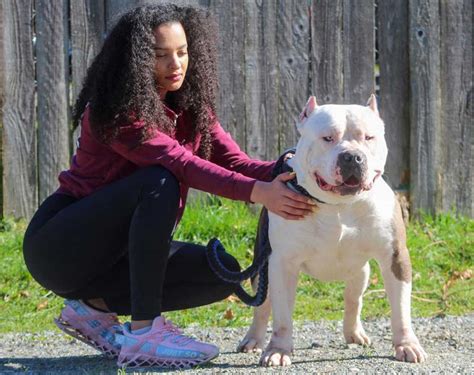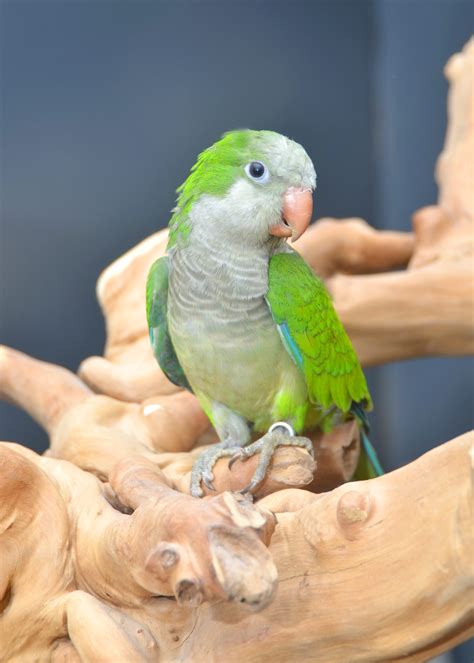
A heartwarming video of an unlikely friendship between an XL American Bully and a Chihuahua has captivated the internet, showcasing their playful interaction and challenging breed stereotypes. The viral clip, shared widely across social media platforms, features the two dogs engaging in a joyful playdate, prompting widespread positive reactions and discussions about canine companionship.
The video, highlighting the tender interaction between the imposing XL Bully and the diminutive Chihuahua, has quickly amassed millions of views, likes, and shares. Commentators have expressed surprise and delight at the unlikely pair, with many praising the dogs’ gentle behavior and the video’s potential to challenge preconceived notions about certain dog breeds. “The internet is obsessed with the pair,” Yahoo Life reported, underscoring the video’s significant impact on social media users.
The footage captures a seemingly effortless connection between the two canines, featuring them engaging in playful nips, gentle wrestling, and mutual grooming. The XL Bully, often perceived as intimidating due to its size and muscular build, is seen interacting with the Chihuahua in a delicate and considerate manner. This heartwarming display contrasts starkly with the negative stereotypes frequently associated with the breed.
The reaction to the video has been overwhelmingly positive, with many users sharing their own experiences of owning gentle giants or small dogs who defy expectations. Several animal behaviorists have weighed in, noting that the dogs’ interaction highlights the importance of individual temperament over breed characteristics.
The viral playdate also arrives amidst an ongoing debate surrounding XL Bully breeds, particularly in the United Kingdom, where restrictions and bans have been implemented following a series of incidents involving the breed. This particular video is seen by many as a counter-narrative, showcasing the potential for responsible ownership and gentle behavior within the breed. The video serves as a powerful reminder that judging dogs based solely on their breed can be misleading and harmful.
The video’s popularity underscores the public’s enduring fascination with animal friendships and the desire for heartwarming content. It also highlights the potential for social media to challenge negative stereotypes and promote a more nuanced understanding of different dog breeds. The heartwarming interaction between the XL Bully and the Chihuahua serves as a reminder of the power of companionship and the importance of judging individuals based on their behavior, not their breed. The viral video has not only captured the hearts of millions but has also sparked a meaningful conversation about breed stereotypes, responsible pet ownership, and the power of interspecies friendships.
The video’s unexpected virality has also prompted animal welfare organizations to emphasize the significance of proper training, socialization, and responsible breeding practices in shaping a dog’s temperament. Experts suggest that focusing on individual behavior rather than breed-specific generalizations can lead to a more informed and compassionate approach to pet ownership.
The viral video featuring the XL Bully and Chihuahua is a testament to the power of heartwarming content to spread positivity and challenge negative perceptions. It serves as a reminder that, regardless of breed or size, dogs are individuals with unique personalities and the capacity for deep connection. The enduring impact of the video lies in its ability to promote empathy, challenge stereotypes, and celebrate the joy of unexpected friendships.
Extended Details and Context
The viral video of the XL Bully and Chihuahua playdate represents more than just a fleeting internet sensation; it serves as a compelling case study in how media can influence public perception of specific dog breeds and the broader implications of responsible pet ownership. To fully appreciate the significance of this viral moment, it’s crucial to delve into the specific characteristics of the XL Bully breed, the context surrounding breed-specific legislation (BSL), and the potential for such content to promote positive change.
Understanding the XL American Bully
The XL American Bully is a relatively new breed, having emerged in the late 20th century from a combination of American Pit Bull Terriers, American Bulldogs, and other bully breeds. Bred primarily for companionship, the XL Bully is characterized by its muscular build, broad chest, and large head. Despite their imposing appearance, responsible breeders and owners emphasize that XL Bullies are generally known for their gentle and affectionate nature.
However, due to their size and strength, XL Bullies have become the subject of controversy, often associated with aggressive behavior and dog attacks. This perception is exacerbated by irresponsible breeders who prioritize size and aggression over temperament, as well as by owners who fail to provide adequate training, socialization, and containment. It’s important to recognize that the breed is not inherently aggressive, and that proper care and responsible ownership are crucial factors in determining a dog’s behavior.
Breed-Specific Legislation and the XL Bully Debate
The debate surrounding XL Bullies is particularly acute in countries like the United Kingdom, where BSL has been implemented in response to concerns about public safety. Under the Dangerous Dogs Act 1991, certain breeds deemed “dangerous” are prohibited, and owners of restricted breeds face strict regulations, including mandatory sterilization, muzzling in public, and third-party liability insurance.
In recent years, there have been increasing calls to add XL Bullies to the list of prohibited breeds in the UK, following a series of high-profile incidents involving the breed. Proponents of BSL argue that it is necessary to protect the public from potentially dangerous dogs, while opponents contend that it is discriminatory, ineffective, and punishes responsible owners for the actions of a few. Critics of BSL argue that it fails to address the root causes of dog aggression, such as irresponsible breeding, inadequate training, and lack of socialization.
The viral video of the XL Bully and Chihuahua playdate has emerged as a powerful counter-narrative to the negative stereotypes surrounding the breed. By showcasing the gentle and playful interaction between the two dogs, the video challenges the notion that XL Bullies are inherently dangerous and incapable of forming positive relationships with other animals.
The Power of Social Media to Shape Perceptions
The widespread dissemination of the video through social media platforms has amplified its impact, reaching millions of viewers across the globe. Social media algorithms have played a crucial role in amplifying the video’s reach, prioritizing content that elicits strong emotional responses and promotes engagement. As a result, the heartwarming playdate has been shared, liked, and commented on by a diverse audience, including dog lovers, animal welfare advocates, and individuals with little prior knowledge of the XL Bully breed.
The video’s virality has also prompted a broader discussion about the role of media in shaping public perceptions of specific dog breeds. Experts argue that sensationalized news reports and online content can contribute to negative stereotypes, leading to discriminatory policies and unfair treatment of certain breeds. By contrast, positive and heartwarming content, such as the XL Bully and Chihuahua playdate, can help to challenge these stereotypes and promote a more nuanced understanding of canine behavior.
Promoting Responsible Pet Ownership and Education
The viral video also serves as a timely reminder of the importance of responsible pet ownership and education. Animal welfare organizations emphasize that all dog breeds, regardless of size or temperament, require proper training, socialization, and care to ensure their well-being and the safety of the community. Responsible owners are committed to providing their dogs with a safe and stimulating environment, as well as ongoing training and socialization to prevent behavioral problems.
Furthermore, education is crucial in dispelling myths and stereotypes about specific dog breeds. By providing accurate information about breed characteristics, responsible breeding practices, and the importance of socialization, animal welfare organizations can help to promote a more informed and compassionate approach to pet ownership.
The unexpected friendship between the XL Bully and Chihuahua has captured the hearts of millions, offering a powerful counter-narrative to the negative stereotypes surrounding the breed. The viral video has sparked a global conversation about BSL, the role of media in shaping public perceptions, and the importance of responsible pet ownership. By challenging stereotypes and promoting empathy, the video has the potential to inspire positive change and create a more inclusive and compassionate world for all dogs.
The Broader Context of Interspecies Friendships
Beyond its specific focus on breed stereotypes, the viral video taps into a broader human fascination with interspecies friendships. Throughout history, people have been captivated by stories of unlikely animal pairings, from dogs and cats to birds and reptiles. These stories often resonate with us because they challenge our preconceived notions about the natural world and remind us of the potential for harmony and connection across species.
Interspecies friendships can also provide valuable insights into animal behavior. By observing how different species interact with one another, scientists can gain a deeper understanding of their social structures, communication patterns, and cognitive abilities. Furthermore, these friendships can serve as a model for human relationships, reminding us of the importance of empathy, tolerance, and acceptance.
Ethical Considerations and Media Responsibility
While the viral video of the XL Bully and Chihuahua has generated positive attention, it’s important to consider the ethical implications of sharing such content. Animal welfare advocates caution against anthropomorphizing animals or portraying them in ways that could encourage irresponsible behavior. For example, promoting the idea that all dogs are inherently friendly and tolerant could lead to owners neglecting proper socialization or ignoring warning signs of aggression.
Furthermore, media outlets have a responsibility to provide accurate and balanced information about dog breeds and responsible pet ownership. Sensationalizing stories of dog attacks or perpetuating negative stereotypes can have harmful consequences, leading to discriminatory policies and unfair treatment of certain breeds. By contrast, promoting positive and informative content can help to educate the public and encourage responsible pet ownership.
The Long-Term Impact of Viral Content
The long-term impact of the viral video remains to be seen, but it has the potential to contribute to a broader shift in public perceptions of XL Bullies and other stigmatized breeds. By challenging stereotypes and promoting empathy, the video can help to create a more inclusive and compassionate world for all dogs.
However, it’s important to recognize that viral content is often fleeting, and that sustained efforts are needed to bring about lasting change. Animal welfare organizations must continue to advocate for responsible breeding practices, comprehensive training programs, and fair and effective legislation. Furthermore, media outlets must commit to providing accurate and balanced coverage of dog-related issues, avoiding sensationalism and promoting responsible pet ownership.
The Evolving Landscape of Dog Breed Perceptions
The perception of dog breeds is constantly evolving, influenced by factors such as media coverage, cultural trends, and scientific research. In recent years, there has been a growing awareness of the limitations of breed-specific legislation and a greater emphasis on individual temperament and responsible ownership. This shift in perception is reflected in the increasing popularity of mixed-breed dogs, as well as the growing acceptance of previously stigmatized breeds.
The viral video of the XL Bully and Chihuahua is a testament to this evolving landscape, demonstrating the power of positive content to challenge stereotypes and promote empathy. By showcasing the gentle and playful interaction between the two dogs, the video has captured the hearts of millions and inspired a global conversation about breed perceptions, responsible pet ownership, and the potential for interspecies friendships.
The ongoing dialogue surrounding XL Bullies and BSL highlights the complexity of animal welfare issues and the need for comprehensive solutions. Ultimately, creating a safer and more compassionate world for all dogs requires a collaborative effort involving breeders, owners, animal welfare organizations, policymakers, and the media.
The Science of Canine Bonding
The heartwarming interaction between the XL Bully and Chihuahua prompts curiosity about the science behind canine bonding. Dogs, as social animals, are naturally inclined to form strong attachments with both their human companions and other animals. This bonding process is influenced by a complex interplay of hormones, neurotransmitters, and environmental factors.
Oxytocin, often referred to as the “love hormone,” plays a crucial role in facilitating social bonding in dogs. Studies have shown that oxytocin levels increase in both dogs and humans during positive interactions, such as petting, playing, and cuddling. This surge of oxytocin promotes feelings of trust, affection, and closeness, strengthening the bond between individuals.
In addition to oxytocin, other neurotransmitters, such as dopamine and serotonin, also contribute to canine bonding. Dopamine is associated with pleasure and reward, while serotonin regulates mood and social behavior. These neurotransmitters help to reinforce positive interactions and create a sense of well-being, further strengthening the bond between dogs and their companions.
The Role of Early Socialization
Early socialization is critical for shaping a dog’s social behavior and ability to form positive relationships with other animals. During the critical socialization period, which typically occurs between 3 and 16 weeks of age, puppies are highly receptive to new experiences and readily form attachments with humans, dogs, and other species.
Exposing puppies to a wide range of social stimuli during this period can help them to develop into well-adjusted and confident adults. Puppies who are properly socialized are less likely to exhibit fear, aggression, or anxiety in response to unfamiliar people or animals.
The Significance of Body Language
Understanding canine body language is essential for interpreting the interactions between dogs and ensuring their safety and well-being. Dogs communicate primarily through body language, using a variety of signals to convey their intentions, emotions, and social status.
Signs of positive social interaction in dogs include relaxed body posture, playful bowing, gentle tail wagging, and soft facial expressions. Conversely, signs of stress or aggression include stiff body posture, growling, snapping, and baring teeth. By carefully observing a dog’s body language, owners can identify potential conflicts and intervene to prevent escalation.
The viral video of the XL Bully and Chihuahua provides a valuable opportunity to educate the public about canine body language and the importance of responsible socialization. By promoting a better understanding of how dogs communicate, we can help to prevent dog bites and create a safer and more harmonious environment for all.
FAQ Section
1. What made the video of the XL Bully and Chihuahua go viral?
The video went viral due to its heartwarming and unexpected nature. The sight of a large XL Bully interacting gently and playfully with a small Chihuahua challenged preconceived notions about breed stereotypes, capturing the hearts of millions of viewers and eliciting positive emotions. The unlikely friendship resonated with people seeking uplifting content, leading to widespread sharing and engagement.
2. How does this video challenge stereotypes about XL Bully breeds?
XL Bullies are often portrayed negatively in the media, associated with aggression and danger. This video presents a contrasting image, showing the XL Bully as gentle, affectionate, and capable of forming positive relationships with other animals, regardless of size. By highlighting the dog’s positive behavior, the video challenges the notion that XL Bullies are inherently aggressive.
3. What factors contribute to a dog’s temperament, regardless of breed?
A dog’s temperament is shaped by a combination of genetic factors, early socialization, training, and environmental influences. Responsible breeding practices, which prioritize temperament over physical traits, play a crucial role. Early socialization, exposing puppies to a variety of people, animals, and environments, helps them develop into well-adjusted adults. Consistent training and a safe, stimulating environment also contribute to a dog’s overall well-being and behavior.
4. What is Breed-Specific Legislation (BSL), and what are its pros and cons?
BSL refers to laws that regulate or ban specific dog breeds deemed “dangerous.” Proponents argue that BSL protects the public from potentially aggressive dogs, while opponents argue that it is discriminatory, ineffective, and punishes responsible owners for the actions of a few. Critics contend that BSL fails to address the root causes of dog aggression, such as irresponsible breeding, inadequate training, and lack of socialization.
5. What can pet owners do to promote positive interactions between dogs of different sizes and breeds?
Pet owners can promote positive interactions by ensuring proper socialization from a young age, providing adequate training, and carefully supervising interactions between dogs of different sizes and breeds. It’s essential to monitor body language and intervene if any signs of stress or aggression are observed. Creating a safe and comfortable environment for all dogs, with plenty of space and resources, can also help prevent conflicts. Responsible pet ownership includes understanding canine behavior and prioritizing the well-being of all animals involved.









